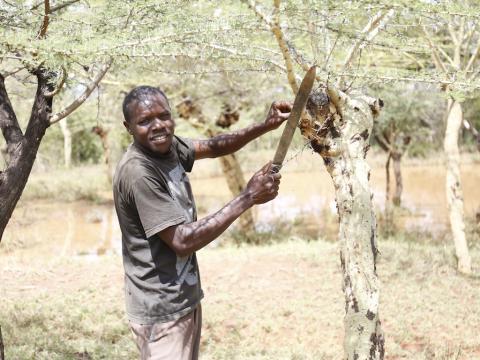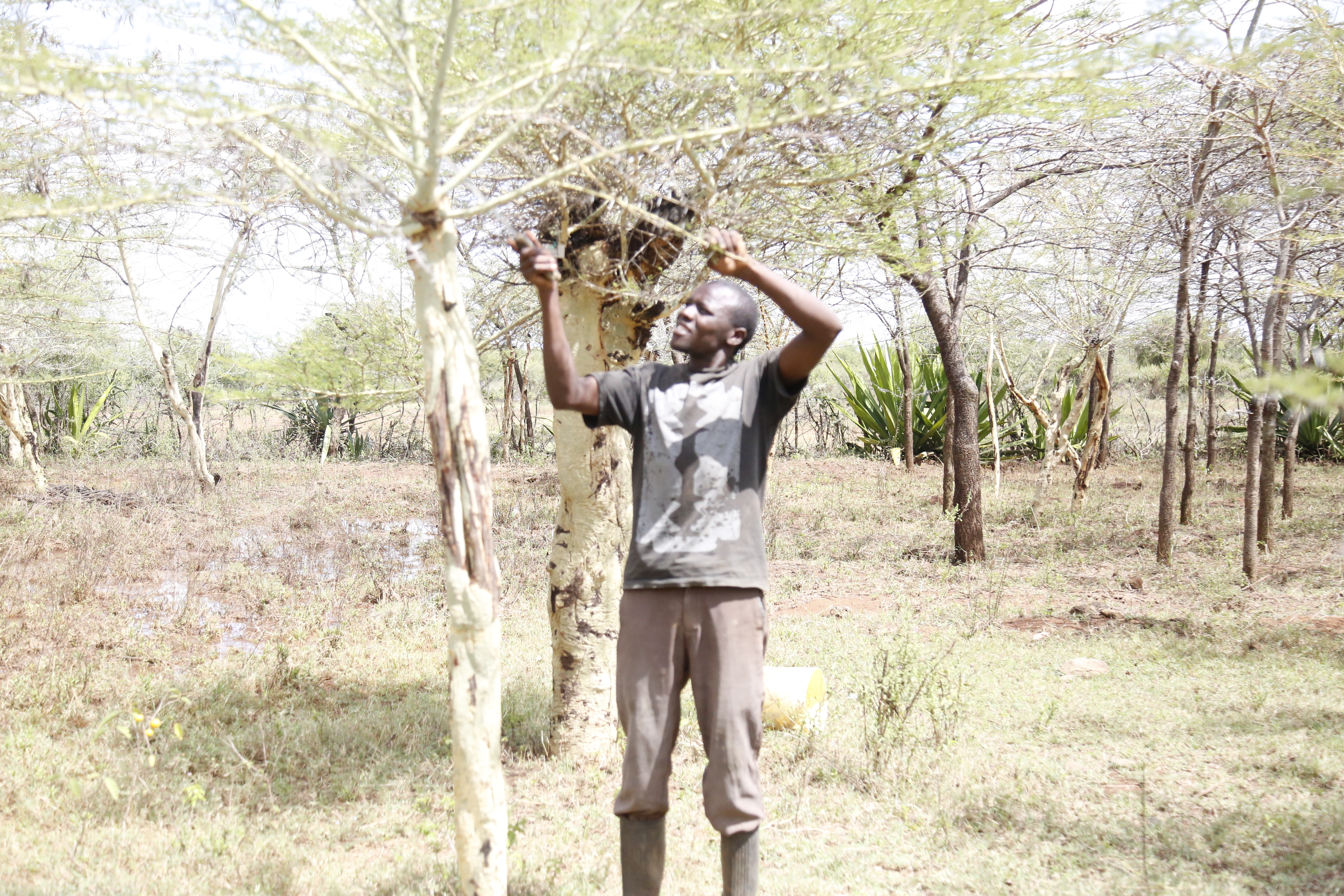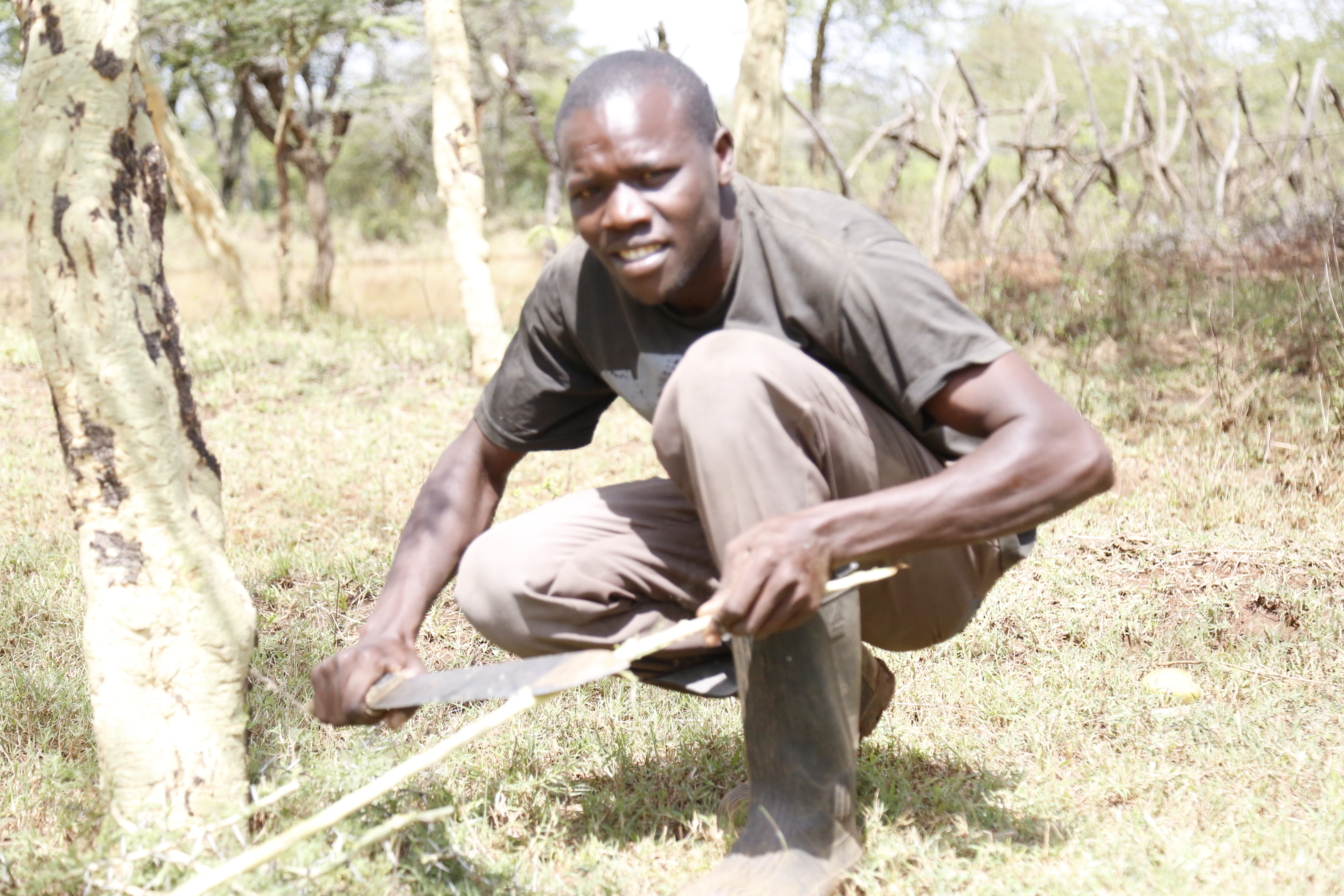Acacia Trees Cushion Family from Drought Agony

By Zipporah Karani, World Vision Communications Officer, Kenya
Kipkoskei, a young man in his thirties, remembers all-too-well the prolonged drought of 2016 that adversely affected his community of Marigat, located in Kenya's Baringo County.
The scorching heat dried all vegetation, leaving in its trail bare cracked soils and dead or severely malnourished livestock. Many people lost their animals, watching painfully as they suffered and died slow deaths.
“Most people here are pastoralists. So, without the animals, they were unable to provide food for their families, pay school fees and meet other household expenses,” he said.
Luckily for Kipkoskei, his family had an acacia plantation that saved them from the agony, thanks to the knowledge and training received from World Vision.

“We fed animals on the barks of the tree, sometimes mixing it with dry grass that we had stored. This helped a lot as the cows were able to give us some milk and meat.”
As a result, Kipkoskei successfully completed his secondary education since his father raised school fees from selling the animal products. His young nieces and nephews, staying with the family, were also well-fed and catered for.
The acacia (Senegal species) is one of the indigenous trees that World Vision is promoting in Baringo County through its widely used and low-cost tree regeneration approach known as Farmer Managed Natural Regeneration (FMNR).
This initiative is supported by the organisation's Central Rift FMNR Scale-Up Project (CRIFSUP), which is funded by the Australian NGOs Co-operation Programme under the Department of Foreign Affairs and Trade (DFAT), through World Vision in Australia.

The innovative approach promotes the growth of trees from already existing tree stumps or naturally-occurring tree seeds.
Festus Chirchir, a FMNR Scale-Up Project Manager at World Vision Kenya based in Marigat notes that the drought-tolerant acacia trees offer an ideal and nutritious fodder for livestock during dry spells.
Their barks - comprising of the special gum Arabica - make the fodder palatable and easy to swallow, while at the same time hydrating the animals.
Because the gum is also in high demand by food processing Industries, it can generate additional income for farmers.
Learn more about other Livelihoods and Resilience projects being implemented by World Vision in Kenya here.